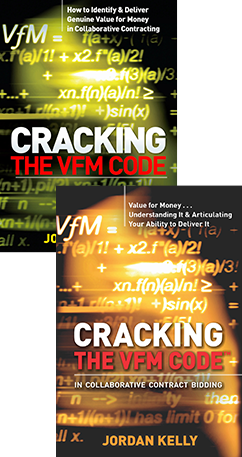CATEGORIES:

There are reasons beyond the obvious that you really don’t want to be one of those tenderers that engages in the flawed strategy of surreptitiously swapping out delivery team members for those of a lesser calibre, post-bid.
But let’s start with the "above the surface" reasons:
- Depending upon how far down the food chain you’ve reached for your substitute team members, you’re taking a performance-based risk on multiple fronts – from those in hard core commercial areas right through to safety issues.
- You’re demonstrating either an inability to plan and forward-schedule work and projects, or an inherent non-trustworthiness. Or both. Going forward, that non-trustworthiness and/or incompetence will see your general credibility compromised in the eyes of the client.
Now let’s look at the more insidious, "below the surface" ramifications of swapping out "A Team" members with "B Team" members.
- Actually, if we are honest here and with specific reference to the civil infrastructure sector, it’s not unheard of that it’s worse than a "B Team" for "A Team" swap-out. Some contractors have been known to roll out the F Troop. There’s no way that strategy, or any part thereof, can ever be excused by the client or project owner, to whom it will now be clear that you should never have submitted a bid in the first place.
- That eroded trust factor will cast suspicion over your honesty in, for example, variations. So – whether you’ve been honest or not – if you’ve gone as far as presenting the C Team, the D Squad or F Troop – you’ll be on the back foot in terms of the client’s attitude towards you in any negotiations that need to be had during the project or contract.
- If this project or service delivery doesn’t go swimmingly well, a default conclusion by the project owner or client will be that the lesser calibre of team members likely contributed significantly to a compromised or non-optimal out-turn.
- In the mind of the client, if you’ve pulled this stunt once, you’ll likely do it again. That doesn’t augur well for your chances in future contracts for which you may want to bid.
- Used in accordance with a savvy strategy, testimonials are powerful inclusions in submissions. Thus, every testimonial you are able to collect from a completed delivery, or even a delivery in progress, is of immense value. What sort of a testimonial are you going to get from a client with a sour taste in his or her mouth over a disingenuous move like substituting key personnel?
- Sin begets sin. Once moral standards are compromised in one area of a project, the bar gets lowered in others. Often, it becomes a systemic problem for the business as a whole.
- The “uneven wheel” syndrome: Bringing in personnel of a lower calibre / qualification / experience level than the remaining original members of the team, stands to cause disgruntlement in those members, and potentially, to de-stabilise the dynamics within the delivery team as a whole.
- If an individual is elevated “above their pay grade” and into a project that they’re not truly up to, when that individual leaves your employ and your project is included on the CV his new employer submits for future bids, a savvy tender evaluator – who’s been around for a while – is going to look at the calibre of individual you put on projects you win.
Don’t Under-Estimate That Last Point
The individual who found himself or herself “over-recognised” by inclusion on a project that he or she shouldn’t have been, is going to herald that entry on their CV prominently. And you were, of course, their employer at the time.
TO BID OR NOT TO BID
(Training Program)
The real value of a thorough and well thought-out bid/no bid decision analysis – whether highly structured or less so – results from asking the right questions (in a logically-progressing order) and seeking out well-researched answers.
It's a customised, deep-thinking process during which a valuable perspective of the client and the opportunity is built. When that is followed by a realistic self-analysis, the framework is in place for making a genuinely strategic, properly informed decision.

CRACKING THE VfM CODE IN COLLABORATIVE CONTRACTING
(Book Duo)
Book 1 in the 'Code' duo is a weighty 350-page production that provides an unprecedented degree of insight into what it takes to produce a consistent record of value-for-money results in major public infrastructure projects.
Completing the 'Code' duo, Book 2 offers insightful and authoritative mentorship and intelligence on winning high-value, collaborative contracting bids.
NB: Each book is a fully self-contained, stand-alone production in its own right.



